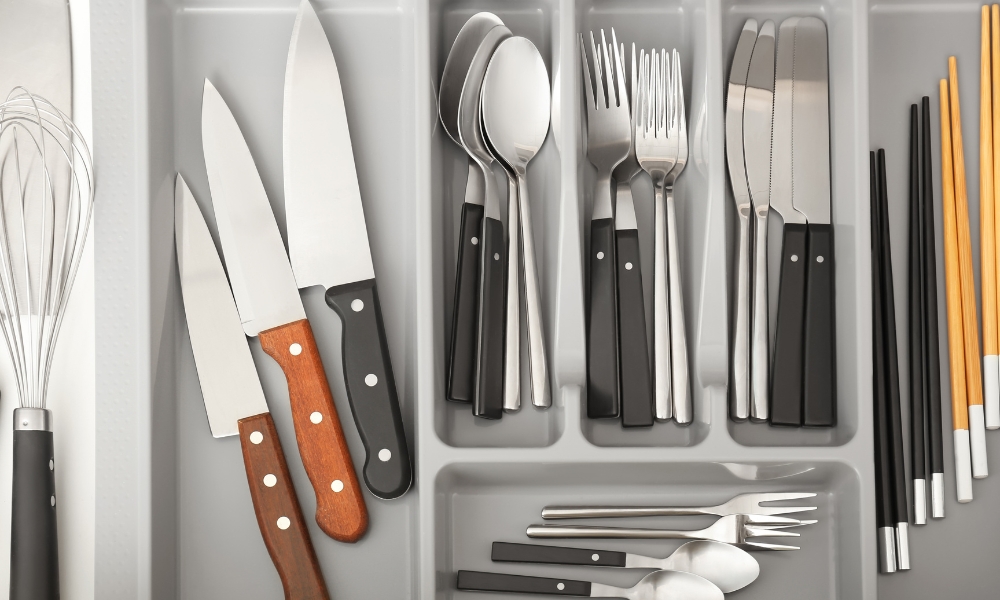Efficiently organizing cooking utensils is fundamental for streamlining kitchen workflows and enhancing culinary experiences. A well-structured arrangement not only expedites meal preparation but also cultivates an inviting atmosphere where creativity flourishes. From spatulas to saucepans, each utensil plays a pivotal role in the culinary process, warranting a thoughtful approach to their storage. By implementing strategic organizational techniques, individuals can optimize space utilization, minimize clutter, and foster a harmonious cooking environment. This guide delves into practical strategies and innovative solutions to help individuals effectively organize their arsenal of cooking utensils, ensuring culinary endeavors are met with ease and efficiency.
Why Organize Cooking Utensils?
Organizing cooking utensils is essential for several reasons. Firstly, it saves time and effort during meal preparation by providing quick and easy access to the necessary tools. A well-organized kitchen promotes efficiency, allowing cooks to focus on the creative aspect of cooking rather than searching for misplaced pot. Additionally, organized utensils contribute to a tidy and visually appealing kitchen environment, enhancing overall cooking experience and enjoyment. Lastly, proper organization helps extend the lifespan of pot by preventing damage and wear caused by clutter and improper storage.
Organize Cooking Utensils
1. Declutter

The first step in organizing cooking utensils is to declutter the kitchen space. Begin by emptying all drawers and cabinets containing pot and assess each item’s usefulness and condition. Discard broken or duplicate utensils, as well as items that have not been used in a long time. Be ruthless in decluttering to create a clean slate for organization. Once unnecessary items have been removed, it becomes easier to allocate space for the remaining pot and ensure everything has its designated place.
2. Categorize
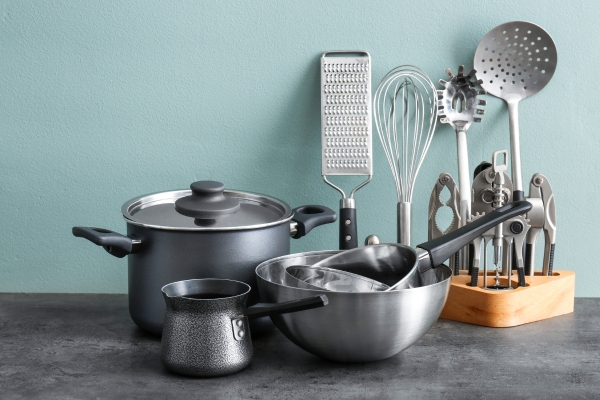
After decluttering, categorizing utensils is crucial for efficient organization. Group similar items together based on their function or type, such as spatulas, ladles, knives, and measuring cups. Assign specific storage areas or containers for each category to streamline retrieval and maintain orderliness. Consider utilizing drawer dividers, utensil trays, or hanging racks to separate different categories and maximize space utilization. Labeling containers or drawers can further facilitate identification and retrieval of utensils, especially in shared kitchen spaces or households with multiple cooks. By categorizing pot, it becomes easier to locate specific items when needed and maintain a clutter-free cooking environment.
3. Use Drawer Dividers
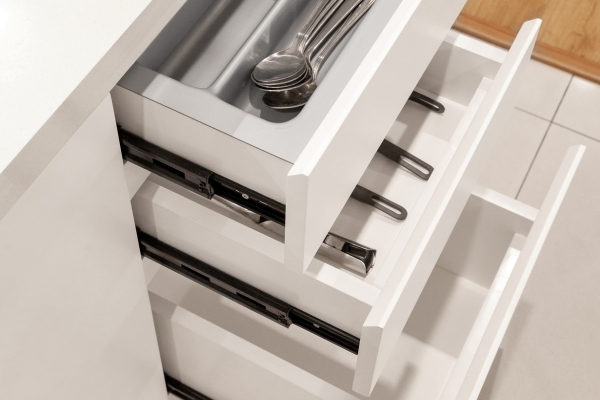
Drawer dividers are invaluable tools for maximizing space and organizing cooking utensils efficiently. They allow you to create customized compartments within drawers, ensuring each utensil has its designated spot. Utilize dividers to separate utensils by type or size, making it easier to locate specific items and preventing them from becoming jumbled together. Adjustable dividers offer flexibility to accommodate various utensil sizes and shapes, while fixed dividers provide stability and structure to drawer organization. By utilizing drawer dividers, you can create a tidy and orderly storage solution that optimizes drawer space and enhances accessibility to cooking utensils.
4. Utensil Holders And Caddies
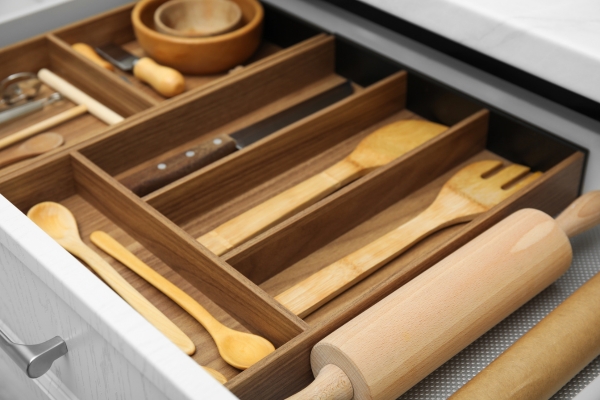
Utensil holders and caddies are practical solutions for organizing frequently used pot on countertops or kitchen islands. Choose holders or caddies with multiple compartments to separate different types of utensils, such as spoons, spatulas, and tongs. Opt for materials like stainless steel, ceramic, or bamboo for durability and aesthetic appeal. Place utensil holders near the stove or food preparation area for convenient access while cooking. Additionally, consider rotating pot based on seasonal or frequently used items to ensure optimal accessibility and functionality. Utensil holders and caddies not only keep utensils within reach but also add a decorative element to the kitchen space.
5. Wall And Door Storage
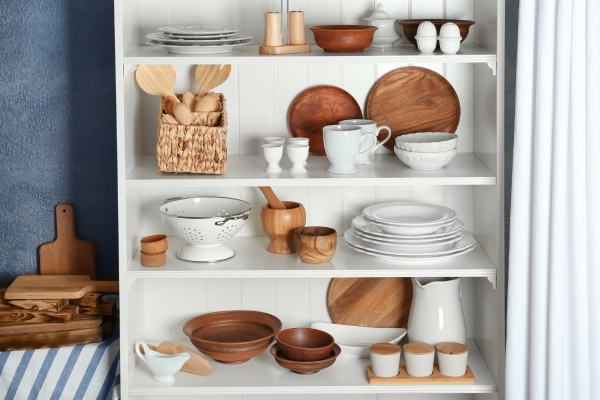
Make use of vertical space in the kitchen by installing wall-mounted or door-mounted storage solutions for cooking utensils. Install hooks, rails, or pegboards on walls to hang utensils, freeing up valuable drawer and countertop space. Door-mounted organizers, such as racks or baskets, provide additional storage capacity without occupying floor or countertop space. Organize pot based on frequency of use, with frequently used items placed within easy reach and less frequently used items positioned higher or lower on the storage unit. Wall and door storage solutions help maximize kitchen space efficiency while keeping utensils accessible and visually appealing.
6. Drawer Inserts And Trays
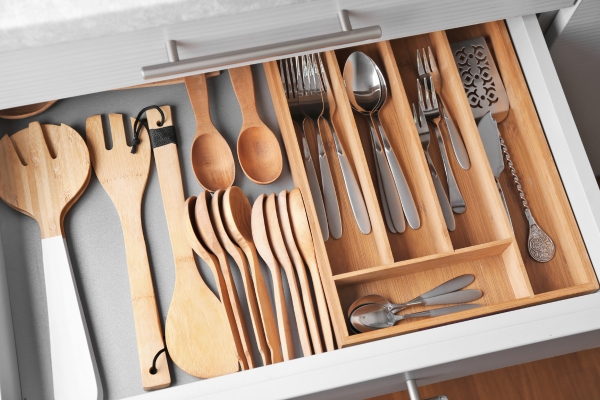
Drawer inserts and trays offer a structured approach to organizing cooking utensils within drawers. Choose inserts with compartments or dividers that fit snugly within drawers, preventing utensils from shifting or sliding around. Inserts can be customized to accommodate various utensil sizes and shapes, allowing for efficient organization and storage. Consider stackable trays or expandable inserts to adapt to changing storage needs over time. Labeling compartments or sections can further streamline organization and facilitate quick retrieval of pot. Drawer inserts and trays provide a practical and versatile solution for keeping pot neatly organized and readily accessible in kitchen drawers.
7. Organize By Size
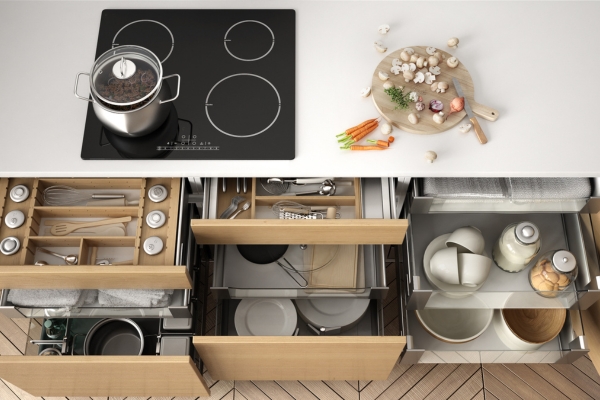
Organizing cooking utensils by size is a simple yet effective strategy for maximizing space and maintaining orderliness. Arrange pot within drawers or containers according to their dimensions, with larger items placed towards the back and smaller ones towards the front. This arrangement prevents larger utensils from overshadowing smaller ones and ensures easy access to all pot without rummaging through clutter. Consider using adjustable dividers or containers with varying compartment sizes to accommodate pot of different dimensions. Organizing by size not only optimizes storage space but also enhances visual clarity and accessibility in the kitchen.
8. Consider Specialty Storage Solutions
Explore specialty storage solutions designed specifically for organizing cooking utensils to address unique storage challenges and preferences. Invest in magnetic strips or racks to mount metallic utensils on walls, freeing up drawer space and adding a decorative element to the kitchen. Utilize hanging baskets or hooks to store pot vertically, particularly in kitchens with limited cabinet or drawer space. Explore innovative storage solutions such as utensil drawer inserts with built-in knife blocks or spice racks for added functionality and convenience. Specialty storage solutions cater to diverse organizational needs and preferences, offering creative alternatives to traditional storage methods.
9. Maintain Regularly
Maintaining organized cooking utensils requires ongoing effort and diligence to preserve orderliness and functionality. Regularly assess utensil storage areas to identify and address any signs of clutter or disorganization. Return pot to their designated storage spots after each use to prevent accumulation and maintain order. Periodically declutter utensils by purging unused or redundant items and reassessing organizational systems to accommodate changing needs. Clean storage containers, drawers, and racks regularly to prevent dust buildup and ensure optimal hygiene. By establishing a habit of regular maintenance, you can sustain an organized and efficient kitchen environment for seamless culinary experiences.
Conclusion
Effectively organizing cooking pot is essential for optimizing kitchen functionality, enhancing efficiency, and fostering a pleasant cooking environment. By implementing practical strategies such as decluttering, categorizing, and utilizing specialized storage solutions, individuals can streamline meal preparation and maximize space utilization in the kitchen. Organizing utensils by size, considering specialty storage solutions, and maintaining regular upkeep are key components of an effective organizational system. With careful planning and attention to detail, anyone can create a well-organized kitchen space that facilitates seamless culinary endeavors and inspires culinary creativity.
